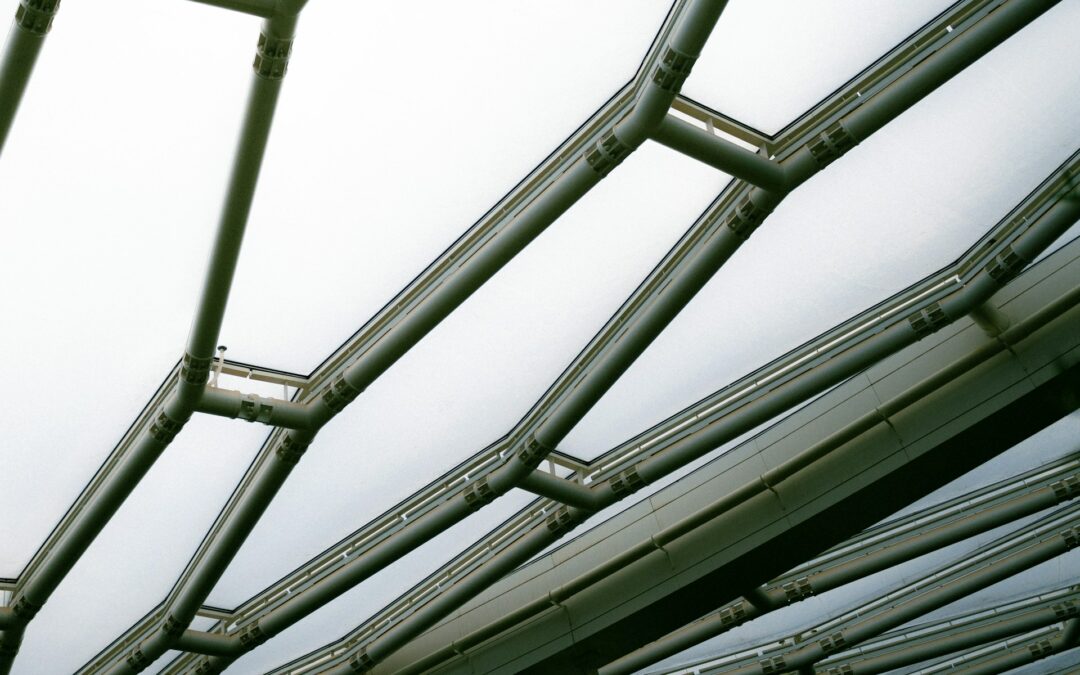This post explores the unique position of modularity in all areas of life and the growing opportunities modularity offers to Building.
Modularity is All Around Us
Modularity is all around us. It is built into nature and is an integral part of many of our cultural achievements. Music, one of our highest creative expressions, relies on modular and standardized components. Technology is filled with modular solutions and standardization. Same for mathematics. Organic forms such as trees, flowers, and shells have evolved modular solutions that can be described by the mathematics of fractals. DNA and RNA contain ATGC modular components that can be combined to form complex structures. Simply put, modularity and standardization help organize many of the major forces that drive the world. Almost none of these sophisticated systems would be able to function effectively without them. Yet, in Building, modularity and standardization remain minor factors in the creative process.
Building Fights Modularity
For instance, every architect uses their own methods, graphics and otherwise, to design blueprints for buildings. Every contractor and builder employ their own unique methods, forms, and workflows for each building project. Can you imagine if every musician used different musical notation when composing a sonata, symphony, or rock song? It would be a lot more difficult to create and collaborate. Indeed, the lack of modularity and standardization in building often leads to dysfunctional processes that produce late, overbudget, and problematic projects.
The Basis of Design
As little as 150 years ago, if one wanted to build a structure, the basis of design was quite open. The process still started at the extraction and processing of raw materials (Mining, forestry, drilling…). These processed materials created unique components (roofs, walls, windows…) for your building. The late 19th century and 20th century brought an onslaught of standard building elements from nails and screws, studs, Gypsum wallboard, doors, windows, elevators, furnaces…etc. The current “Basis of Design” still has so many variables, that when combined with the current regulatory and market conditions, creates dysfunction producing late, over budget projects whose operation is often problematic from opening day.
The good news is that new modular solutions have recently emerged in Building, and modular now accounts for a larger share of the marketplace. The continued growth and influence of modular will depend on how it evolves alongside other factors involved in the building process. BuildUSA defines many of these factors, some of which have been touched on in earlier posts
- Common Data Environments (CDE)
- Building Collaborative Environment (BCE)
- Modular Building, Construction Assembly Modules (CAMs)
- Standards, Templates & Workflows (STWs)
- Collaboratively Integrated Partner Organizations (CIPOs)
- Optimized Building: Defined Design Options (DDOs), Scalable Building Sales (SBS), Pre-determined Start Dates)
Five Core Module Types
Modularity in building has five core manifestations:
- Panels – Panels are typically walls. Panels include multi-disciplinary elements built off-site and delivered to the construction site as a finished Construction Assembly Module (CAM) for final installation/assembly on site.
- Racks – Racks are typically M/E/P/FP and are a structural rack solution that holds multi-disciplinary groups of conduits, pipes, ducts, etc. Racks are built off-site and delivered to the construction site as a CAM for final installation/assembly on site.
- Pods – Pods are typically a box shape and sized to fit on truck/rail transportation. Pods include multi-disciplinary elements built off site and delivered to the construction site as a finished Construction Assembly Module (CAM) for final installation/assembly on site.
- Kit of Parts – Kit of parts can include any configuration of panels, racks, or pods. Due to project requirements, these components cannot be assembled off-site, but will be organized as a kit of parts (think Ikea furniture) and delivered to the construction site for assembly.
- Connections – When CAMs need to be assembled and connected on site as a unit, certain conditions require specific connectors to allow both the placement and proper connection of the CAMs to adjacent units.
Unique Buildings will Always be Needed
Of course, there will always be unique structures that have intrinsic aesthetic value, and certain buildings will remain “Boutique” or “Iconic” for the foreseeable future. But a growing percentage of the building market will be driven by market forces into Optimized and Hybrid solutions. Certain market sectors and building types lend themselves to quicker adoption of Optimized solutions due to pricing, timing to market, and the reality that standardization supports the services provided by the operators of those structures.
Optimized Building & the Supply Chain
The transition to Optimized will impact the entire supply chain. There is a real competition revving up between traditional building material and component suppliers who are considering how and when to enter into the modular market, specifically, the CAM marketplace. It is yet to be determined if the traditional players who have supported the building industry for many decades will look into the future and expand their operations to include CAMs, or if the new generation of entrepreneurial CAM manufacturers will redefine the industry. Recent industry failures, like the inventive and inspirational Katerra start-up, demonstrate the difficulty of creating new manufacturing distributing networks. The speed and efficacy of the growth of modular CAMs and Optimized building will depend on the development of manufacturing /distribution networks capable of providing a wide range of CAMs that can be integrated into a growing number of optimized and other building solutions.
Buildings and infrastructure have been ignored for decades in the USA and around the world. Large sections of the world never developed sufficient housing capacity to begin with. It is now recognized that we would have to build and re-build vast sections of our global built environment. How we approach this massive undertaking will have a profound impact on the success of future generations and their experience of the built environment. Modular will be a big part of any viable solution.
Photo by inyoung jung on Unsplash
